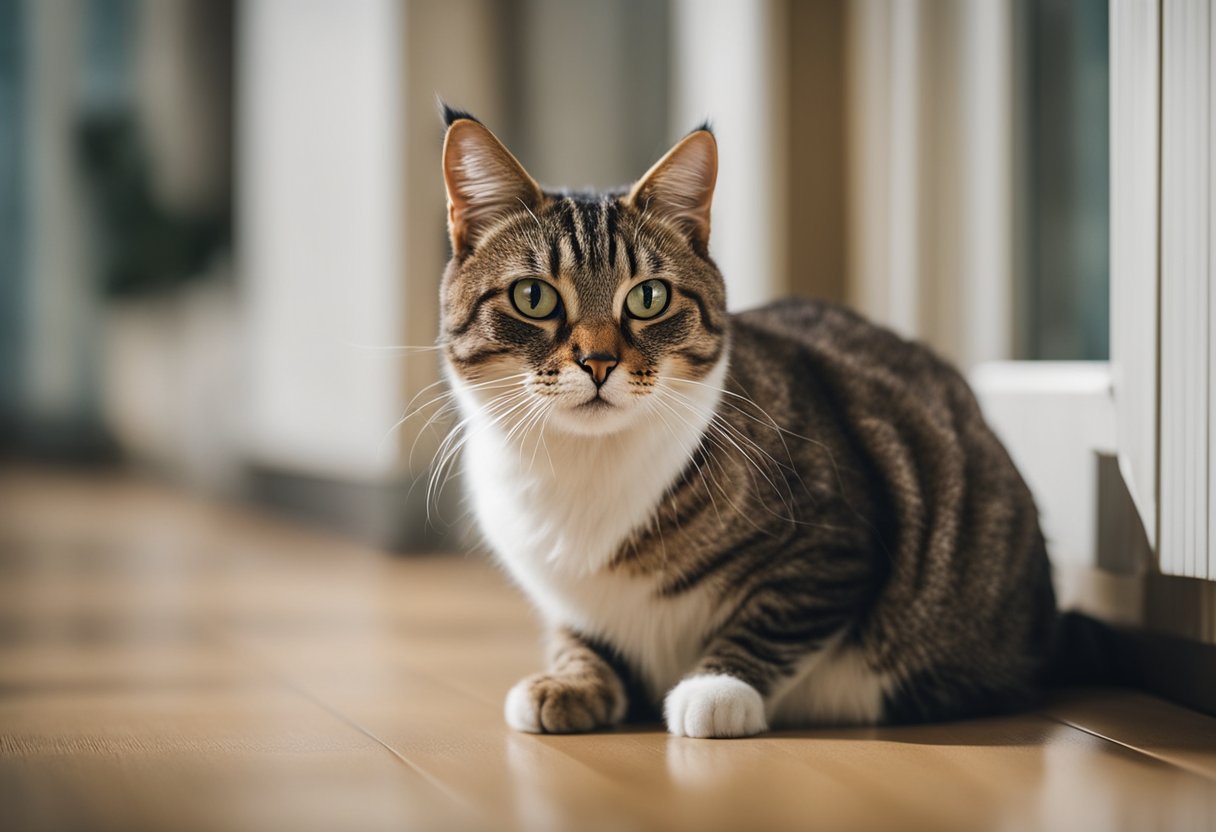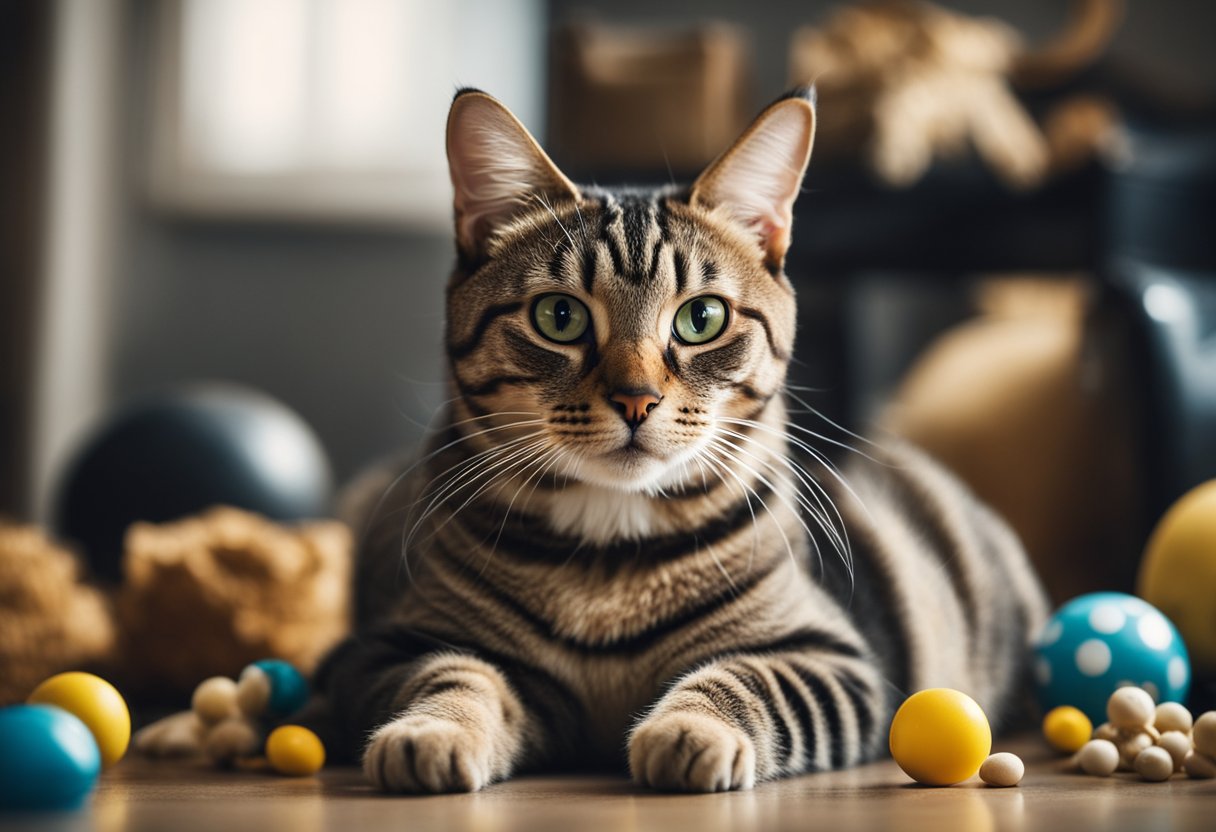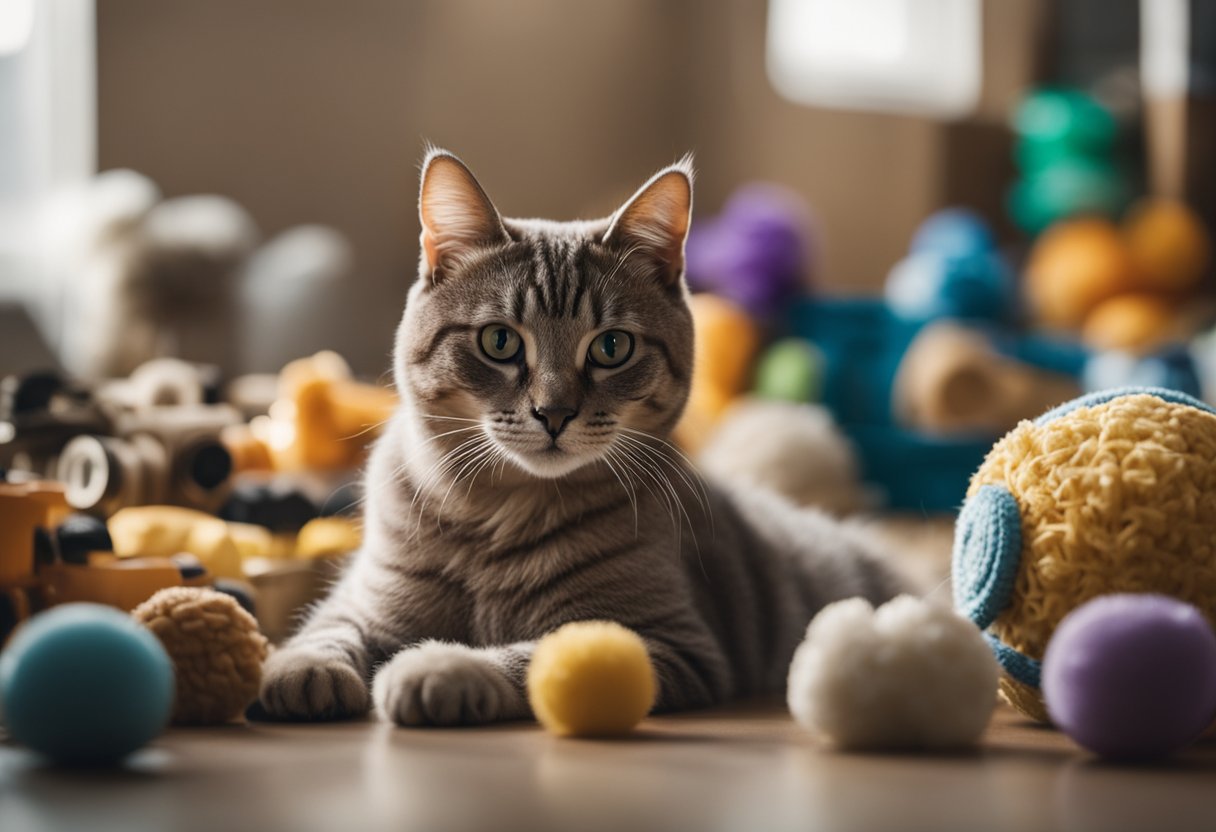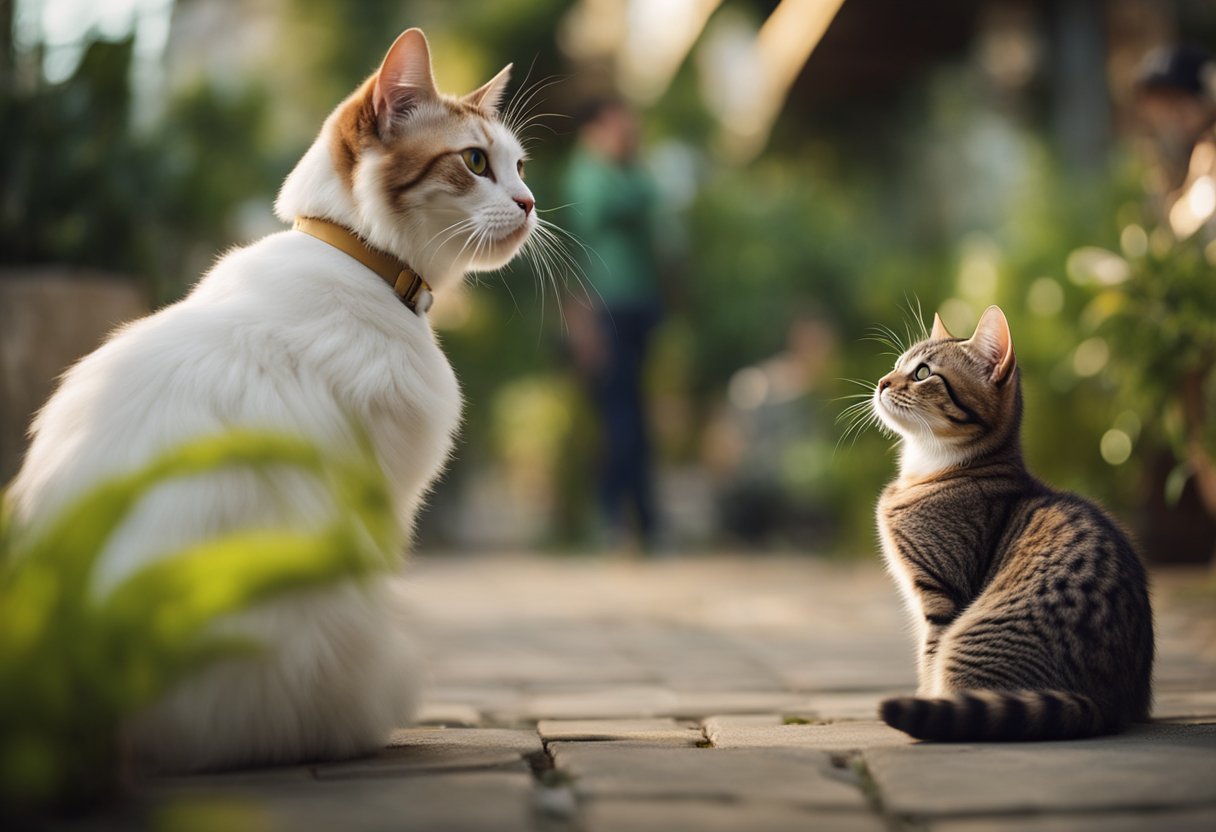Cats are known for their poise and agile nature, yet they are not immune to the occasional slip or tumble. When these mishaps occur, cat owners often observe their pets’ reactions, wondering if the comical or sometimes, unfortunate, events evoke a feeling of embarrassment. Unlike primary emotions such as happiness and fear, which are readily apparent in felines, the concept of embarrassment is more complex and typically associated with self-awareness, a trait often ascribed to humans rather than our feline companions.

Research into cat emotions is still evolving, but it suggests cats have a range of emotions, though they may not experience them in the same way humans do. Cats may display subtle signals, such as twitching ears or anxious grooming behaviors after an unexpected fall, hinting at a level of awareness that could be interpreted as a form of embarrassment. However, attributing human emotions to cats can lead to anthropomorphism, which may not accurately reflect a cat’s true feelings. Therefore, it is important to rely on behavioral science rather than assumption when evaluating a cat’s emotional state.
Key Takeaways
- Cats may show subtle reactions to falling that suggest a primitive form of embarrassment.
- Their responses to such situations should be understood through the lens of cat behavior rather than human emotion.
- Ongoing research continues to explore the complexity of feline emotions and their parallels to human experiences.
Understanding Cat Behavior

When attempting to decipher cat behavior, it’s essential to discern between instinctual habits and the complex emotions humans experience. A deeper look into a cat’s instinctual responses, communication signals, and common misconceptions can enlighten us on whether cats actually experience embarrassment.
Instinctual Responses
Cats possess strong survival instincts that govern much of their behavior. For instance, should a cat fall, it may immediately check its surroundings. This action is less about feeling shame and more about assessing potential threats to its safety. Such instincts can lead to behaviors interpreted as embarrassment, like hiding or grooming after an unusual event.
Communication and Signals
Communication in cats is largely non-verbal, relying heavily on body language and vocalizations such as purring or hissing. Signs that owners might construe as embarrassment, like avoiding eye contact or grooming excessively after a mishap, are often simply ways cats express discomfort or attempt to alleviate stress. They’re not necessarily indicative of complex emotions like shame.
Common Misconceptions
Human interpretations of cat behavior can sometimes anthropomorphize natural animal reactions. The belief that cats feel shame when they fall can be a misattribution. In reality, what may be perceived as a sign of embarrassment could be a cat’s practical response to pain or confusion. Anthropomorphism, applying human traits to animals, can lead to these misinterpretations of preening, vomiting, or scratching as expressions of humiliation when they do not possess the self-awareness required for such emotions.
Do Cats Feel Embarrassment?

Understanding whether cats can feel embarrassment requires examining their behaviors and considering the complexity of their emotions.
Signs of Embarrassment
Cats exhibit various behaviors that may suggest they are experiencing a form of discomfort that can be akin to human embarrassment. When a cat has an awkward fall, it often immediately looks around or quickly resumes playing, as if assessing whether any observers caught the misstep. Tail tucking, ear twitching, and increased grooming—sometimes termed preening—can be physical cues that indicate a cat might feel exposed or uncomfortable.
Research on Cat Emotions
Emotions in cats, including feelings of shame or shyness, are less understood than in humans. Studies have suggested that the capacity for feelings like embarrassment is linked to self-awareness, a trait that’s complex to evaluate in animals. While cat behavior can offer some insights, definitive proof of cats experiencing embarrassment—as humans know it—is currently lacking. Research in cat emotions further explains that feline moods and communication might display signs of discomfort, but attributing these to embarrassment is not conclusive.
How Cats React to Falling

When cats experience a fall, their reactions are a blend of instinctive behaviors and possible emotional responses. These actions can offer insights into feline instincts and their handling of unexpected situations.
Behavioral Responses to Falls
Instincts: Cats display remarkable survival instincts during a fall. Their righting reflex allows them to twist in mid-air and land on their feet. This instinctual response kicks in quickly, often resulting in a graceful landing which can mitigate injury.
Running Away: After landing, a cat may swiftly run away. This is a survival tactic to escape potential threats that could take advantage of the cat’s temporary vulnerability.
Displacement Behavior: Cats may engage in displacement behavior such as grooming after a fall, which could indicate an attempt to handle stress or to cover up any sign of distress or submissiveness that the incident may have caused.
Understanding Cat’s Reactions
Fear and Pain: If a fall results in fear or pain, a cat’s response might include vocalizations or withdrawal. It’s crucial to recognize these signs as they might necessitate a veterinary check for possible injuries.
Pride or Reputation: While it’s debated if cats have a sense of pride or reputation, they might display behaviors that seem to protect their status, especially outdoors or among other animals. After a fall in view of others, cats may look around and then nonchalantly engage in grooming, suggesting a form of embarrassment or composure recovery.
Through observation of these behaviors, one can learn much about the complexity of cats and their capabilities to navigate the physical and social challenges they face, be it indoors or in the outdoors.
Owner and Pet Dynamics

Understanding how cats may or may not experience embarrassment when they fall involves exploring the subtleties of owner and pet dynamics. At the core of these dynamics are interpretation and communication of behaviors, which can influence and reinforce the bonds between cats and their owners.
Interpretation of Cat’s Behavior
Owners often interpret their pet’s behavior through the lens of human emotion, which can lead to the anthropomorphization of natural cat responses. The act of a cat falling and appearing sheepish could be mistaken for embarrassment, but such interpretations are not scientifically substantiated. It’s crucial to recognize that while humans have a complex emotional landscape moderated by brain regions like the pregenual anterior cingulate cortex, cats might not have the same capacity for nuanced emotions in an evolutionary sense.
Signals from a cat, such as hiding after a mishap or a fall, might be communication methods that indicate discomfort rather than shame. These creatures are adept at picking up cues from their environment and owners, which can lead to misinterpretation if one assumes they share the same emotional expressions as humans.
Strengthening Bonds with Cats
Bonding with cats typically hinges on understanding and respecting their nature as independent creatures. The bonds formed between owners and their pets can be strengthened through acknowledging and catering to a cat’s instinctual needs rather than projecting complex human emotions onto them.
Communication with pets involves a mix of verbal cues, body language, and learning to read a cat’s unique signals. By not mislabeling a cat’s reaction to falling as embarrassment and instead providing support and comfort, owners fortify the trust and bond with their feline companions. This approach aligns with a neutral, knowledgeable, and clear understanding that while anthropomorphism is a common aspect of pet ownership, it is not always conducive to authentic bonding or effective communication.
Health and Well-being in Cats
Cats are skilled in masking discomfort as part of their survival instincts, which often makes it challenging to detect when they’re not feeling well. Observing changes in their behavior and physical condition is key to safeguarding their health and well-being.
Signs of Physical Discomfort
Cats may show signs of physical discomfort in several ways, such as altered grooming habits, hissing, or a change in litter box usage. For instance, a cat that is suddenly grooming less or more might be experiencing pain or stress. Frequent vomiting or throwing up can also be a sign of underlying health issues. Close attention should be paid if a cat exhibits hesitation before jumping, as this might indicate discomfort or injury. Additionally, if a cat is farting more than usual or there are changes in their poop, it’s essential to observe for any other signs of distress since these could be symptomatic of dietary issues or health problems.
When to Consult a Veterinarian
Owners should consult a veterinarian if their cat’s behavior changes abruptly. This includes any persisting or unusual occurrences of vomiting (also referred to as puke), grooming habits, or restroom behavior. It’s particularly imperative to seek professional advice when a cat exhibits signs of pain, such as persistent meowing, changes in posture, or reluctance to be touched. Regular check-ups are recommended to ensure a cat’s happiness and health, as well as to prevent any potential issues that might be exploited by predators in the wild.
Feline Emotions and Anthropomorphism
Understanding feline behavior often leads to questions about whether cats experience complex emotions similar to humans, such as embarrassment or shame. At first glance, a cat’s body language after a fall—such as checking its surroundings—may seem to indicate a sense of embarrassment. However, these actions may not necessarily reflect the human emotion of feeling uncomfortable.
Anthropomorphism is the interpretation of non-human behaviors in human terms. People tend to anthropomorphize their pets by assuming they share the same emotional spectrum, including the capacity for embarrassment. But in evolutionary terms, such complex emotions are not typically associated with cats. Instead, cats communicate more basic emotions through their body language.
Detecting signs of embarrassment in cats is not straightforward. For instance, a cat might hide or avoid eye contact after an awkward fall, which people might interpret as a sign of shame. However, these behaviors could be the result of feeling fearful, as cats do not possess an evolutionary sense for the social constructs of embarrassment or shame. Laughter, a common human response to another’s misstep, may also contribute to this interpretation, but there’s no evidence cats understand this as a humiliating reaction.
In summary, while cats are expressive creatures, the attribution of emotions like embarrassment to them is more likely our humanizing of their behavior rather than a true reflection of their emotional state. Understanding cats involves recognizing the limits of the feline emotional spectrum and not overestimating their capacity for complex emotions that make sense mostly in a human context.
Frequently Asked Questions
This section addresses common inquiries about whether cats experience embarrassment, particularly in instances of physical mishaps.
Can feline behavior be interpreted as a display of embarrassment?
Interpreting feline behavior can be challenging as cats are adept at hiding their emotions. The complex emotion of embarrassment in cats is still a subject of debate among experts.
Is there a noticeable reaction in cats after they slip or tumble?
Following a slip or tumble, cats may show a variety of reactions such as looking around or briskly walking away, but these actions may not necessarily indicate embarrassment.
Does the action of grooming have any connection to a cat’s emotional state after a clumsy moment?
Post-fall grooming could be a way for cats to regain composure, although it’s uncertain if this behavior is connected to an emotional state akin to human embarrassment.
What are common cat behaviors that might suggest they are feeling self-conscious?
Some behaviors, like avoiding eye contact or hiding, might be misconstrued as a sign that a cat is feeling self-conscious; however, these could also be indicative of stress or fear.
How do cats typically respond to unusual or awkward situations?
Cats often have a dignified demeanor, but when faced with awkward situations, they might react by distancing themselves from the place of occurrence or displaying a sudden change in behavior.
Are there any scientific studies that address the concept of embarrassment in cats?
While there have been numerous observations of feline behavior, scientific studies directly addressing the concept of embarrassment in cats are limited.
